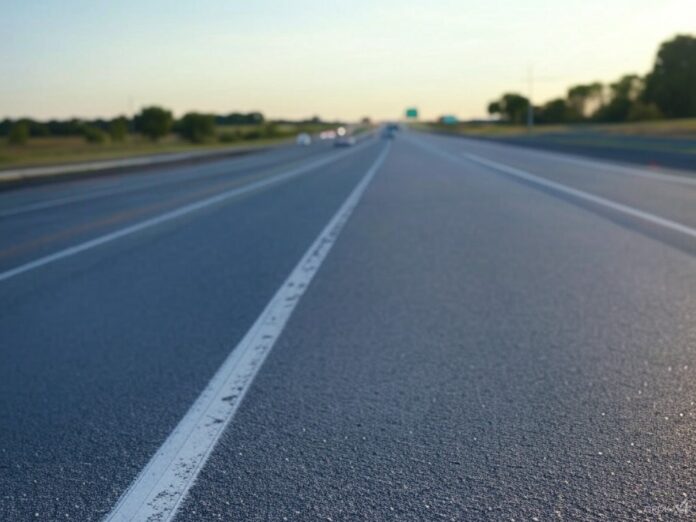How frequently do you, either as a driver or pedestrian witness or hear about traffic accidents? Unfortunately, road accidents have become an everyday occurrence and it seems there isn’t a country in the world that isn’t facing this issue.
In the US, the number of car accidents has been significantly on the rise in the last couple of years. The reason behind this is mainly reckless and aggressive driving as well as speeding. Many drivers fail to consider the safety of others when driving and continue to employ unsafe driving practices only to reach their destination as quickly as possible while completely disregarding the traffic rules and regulations.
Indiana, a state characterized by its rich cultural heritage and vibrant communities, also faces the same issue that impacts its residents’ safety and quality of life. With dense road networks connecting intercity travel and daily commuter routes, the incidence of vehicular accidents has become a significant concern.
Despite advances in vehicle safety technology and awareness campaigns, the state continues to witness a high rate of road fatalities and injuries. This calls for a comprehensive approach to improve the infrastructure, which is crucial in reducing car accidents and enhancing overall transportation safety.
In this blog post, we’ll look into what the state of Indiana can do to improve its infrastructure and reduce the number of car accidents. We’ll also reflect on why the number of car accidents continues to rise.
Why car accidents are a problem in Indiana
Car accidents pose a substantial public health and safety issue across the United States, and Indiana is no exception. The state has recorded a concerning number of car accidents, leading to fatalities and severe injuries. The repercussions of these accidents extend beyond the immediate victims and affect families, communities, and the healthcare system.
In 2022, there were almost 1000 victims of car accidents and the number has been growing since, specialty as the number of commuters but tourists has been growing as well.
Additionally, car accidents carry significant economic costs, including medical expenses, loss of productivity, and damages to vehicles and infrastructure. These expenses ultimately burden taxpayers and strain local governments.
Another consequence that these car accidents have on victims is the emotional stress they leave behind. The aftermath of accidents creates emotional strain not only for victims but also for their families and witnesses. This psychological impact can linger long after the physical injuries have healed.
How infrastructure can be improved
Indiana has a good highway connection but the infrastructure definitely has room for improvement. By improving the infrastructure and recognizing the potential risks and dangers on the road, a lot can be solved and fixed.
However, it’s definitely not an overnight change and it’s a process that takes a lot of time and will power.
Road maintenance and upgrades
First of all, regular maintenance and timely upgrades of existing roadways are vital. This includes filling potholes, addressing surface wear, and ensuring proper drainage to prevent hazardous driving conditions.
Although Indiana.s main roads are mostly in good shape, less frequent intersections and rural roads definitely need an upgrade. This is where car accidents happen usually due to poor road maintenance. And this is exactly when drivers need to bring in a car accident attorney as, due to the roads being unkempt, partial liability for the accident also falls on the local authorities.
That’s why legal support is often brought in, to assess the situation and ensure that the driver doesn’t have to suffer all the fees alone.
Enhanced road signage and visibility
Another thing Indiana can work on is ensuring all roads are clearly marked. Installing clear, visible road signs can alert drivers to hazards, speed limits, and directions. Reflective signage in poorly lit areas can significantly improve night-time visibility.
This will help drivers stay alert and keep their eyes on the road. The signs can also bring their attention to potential hazards.
Expanded public transportation
Investing in public transportation options can reduce the number of vehicles on the road, subsequently lowering the likelihood of accidents. Expanding bus services and creating more bike lanes encourages alternative forms of transportation.
This would encourage more drivers to opt for public transport, meaning it would lead to fewer computers on the road. Additionally, this would result in fewer traffic jams during rush hour.
Smart traffic management systems
Implementing advanced traffic management technologies can improve traffic flow and minimize congestion. Investments in smart traffic lights and sensors can adapt to real-time traffic conditions, reducing stop-and-go scenarios that often lead to accidents.
Dedicated pedestrian and bicycle lanes
What’s missing in most cities is proper infrastructure for pedestrians and cyclists. That puts them in danger of becoming collateral damage in a car accident.
Enhancing pedestrian walkways and bike lanes fosters a safer environment for non-motorized transportation. Separating these pathways from motor vehicle lanes reduces the chance of collisions between vehicles and pedestrians or cyclists.
The final word
Improving Indiana’s infrastructure is paramount in the quest to reduce car accidents and enhance the safety of its roadways. Deteriorating road conditions, improper signage, bad public transportation are all problems that need to be addressed and fixed in order to ensure a safer environment.
The implications of these improvements extend beyond mere statistics; they encompass the well-being of residents and the safety of communities. As Indiana confronts the challenge of car accidents, a strategic focus on infrastructure enhancement will lead to the creation of safer roads and ultimately save lives.







